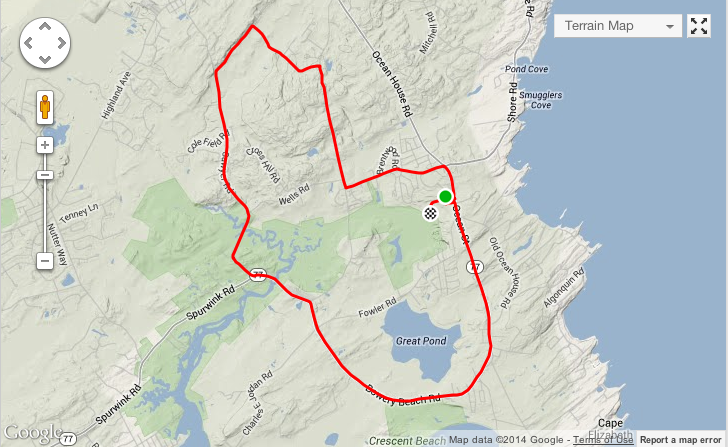I felt very relaxed coming into this race. I had been busy with work, wasn't thinking about it, and by the starting gun was just happy to be going out for a run. The temp was a balmy 40+ degrees and it felt like running in May. The course undulates moderately yet continuously. Plenty of uphill but short and generally with equal downhill. It had a good mix and was a fun beautiful course to run. I can imagine how punishing a race it could be with a 30 knot breeze, ice, snow, and all the fun elements being next to the Atlantic Ocean in February can bring.
I ran an average pace of 6:23 min/mile and was happy with my consistency throughout the ten miles. I didn't feel like I had anymore gas when a couple guys (including my friend Pete) past me in the last sprint. I finished in 1:03:43 and 32rd place overall. Felt like I ran a smart race (which is often not the case), and I'm happy with the results. This was the 32nd running of the race. Turns out that they give out an award to the runner that finishes in the same place as the year being run. Which was me! So I won!
I was also pleased in the new Hoka One One Conquest's I just got this past week. I had only run about 6 miles in them and was impressed with their comfort and performance. They are a little more floaty in the heal than other Hoka's I have worn and I considered dropping down a 1/2 size. So the night before the race I decided to cut out the speed laces and put in normal ones. I used a lacing technique from John Vonhof's Fixing Your Feet. (Which is a bible any runner must have if you don't already.) Basically you lace as you normally would, but at the second to last eyelet, make a secondary eyelet out of shoe lace by coming down into the last eyelet on the same side, then out from below, and across to the other side, lacing through the new lace eyelet you created on the opposite side. After that knot as you normally would (see pic). It worked really well. Before I was just cranking down on the laces so much that the top of my feet hurt. This technique basically creates two separate areas of tension. One across the top of the foot and one from the last eyelet in the direction of the heal cup. If you have narrow feet like me I highly suggest trying it out. Very pleased with the discovery!
 |
| Elevation Profile |




A link to your blog post has been noted. see http://mainerunningphotos.com/photos/mid-winter-classic-10-miler/
ReplyDelete